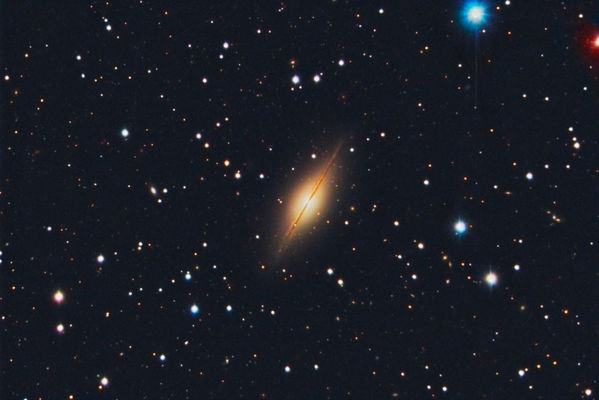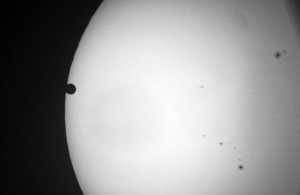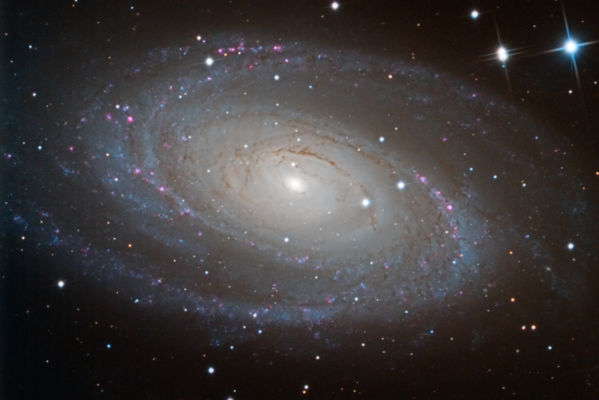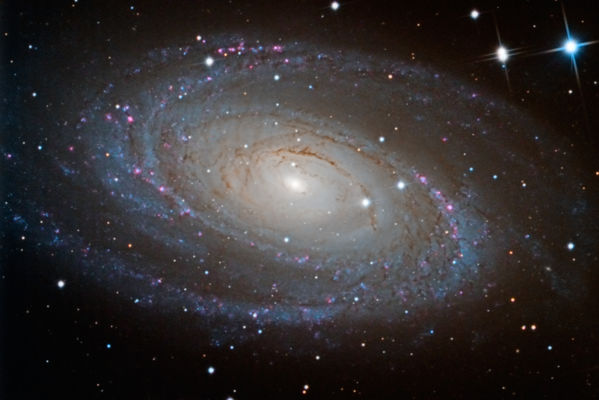AIC 2012 day two has been excellent. After a fine breakfast, we started with the Hubble Award lecture from honoree Adam Block. He demonstrated some of the techniques that make him such a renowned imager and the excellent teaching style that makes his out reach and tutorials so effective. Alistair Symon followed with a good presentation on making wide field mosaics using Photoshop and Registar.
After the break, Travis Rector spoke on Presentation Quality Image Processing. He had some very good lines in his talk including “Astrophotos are like your children, you love them because they are yours not because they are pretty.” Working for the observatories, he is careful not to use any aggressive processing on the image, and he still gets emails with people seeing hidden aliens in image processing artifacts.
He hit the key points in the ongoing discussion of “what does it really look like?”. Or as he said, it doesn’t look like the picture because:
- surface brightness is constant, if you are closer to the object you still couldn’t see it
- People can’t see color in faint light
- Our eyes have poor sensitivity to red light
- Processing compresses the dynamic range does not match direct perception
- Filters and wavelength go beyond visual
So asking what it looks like is a meaningless question. Travis tries to translate what a telescope can see into what we can appreciate. That is his art and he does it very well. Everything he does in processing is done with curves and levels, and he follows some simple rules:
- Know your object – do research and plan what data to capture
- Take educated risks – try what others haven’t
- Crop and rotate to show what you want the viewer to see
- Use color well
- Surface brightness is your friend as an amateur – big scope, you get more small dim objects, smaller scope higher f ratio better on larger objects
Check out the paper Image processing techniques for the creation of presentation quality astronomical images. Available at Arvix.org/abs/Astro-ph/0412138/. (I’ll fix the URLs later)
After lunch we had an excellent talk from UC’s Geoff Marcy on the Hunt for Exoplanets. Then Astronomy magazine’s David Eicher spoke on the Future of Amateur Astrophotography.
The Spotlight presentations were very good. Tom Field presented Simple Spectroscopy. There is a range of options from $200 to $2,000+ for doing spectra, and it is real science. A very enthusiastic presentation. He told a great story about how a strange emission line was seen in a spectra of the sun taken during an eclipse. It did not match any known element. So the unknown element was named Helium for the sun, Helios. Years later, the spectra was seen from a gas coming from decaying uranium. That gas was helium, now really found.
Jerry Bonnell presented on Planetary Nebula on behalf of Don Goldman. Excellent theoretical background was provided. Apparently the hourglass shape of the nebulae comes from the fast moving later stellar pushed above and below the rotation axis by slower stellar winds that primarily go on the rotation axis. All of this is occurring as the star goes through its giant phase at the end of its life.
Sal , a young astrophotographer from Florida, presented on Astrophotography Under Light Polluted Skies. He presented an excellent set of Photoshop centric approaches for producing good images. This included Jay Gabany’s layered contrast stretching approach that, once I get Sal’s presentation I might actually understand how it is done. Sal recommends RGB at 1×1 and same duration as Luminance, combining the RGB with Luminance for a master luminance frame. This FITS my experience when imaging in the city. His paint bucket on background smoothing seems like adding data to me, so I’d avoid that.
Excellent times with the vendors. Altogether a good day!






You must be logged in to post a comment.